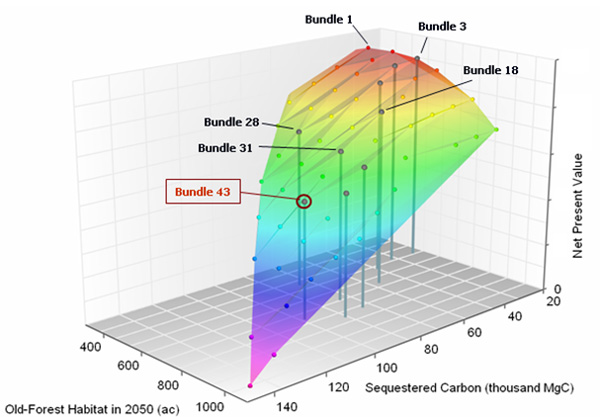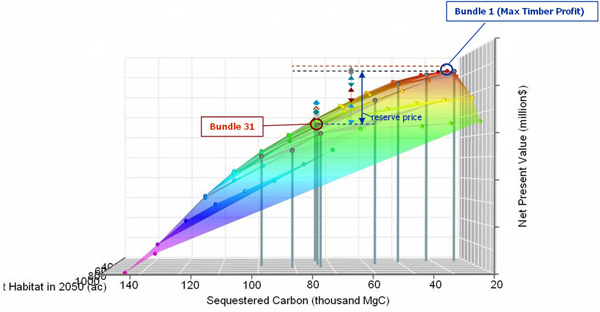Learn More About ECOSEL
Summary
ECOSEL is an auction mechanism that allows individuals or organizations
to bid for forest ecosystem services that could be produced on a
discrete piece of forestland over a specific period of time.
HOW DOES ECOSEL WORK?
I. ECOSEL uses optimization to indentify the most cost-efficient
management plans that can lead to bundles of forest ecosystem
services such as carbon sequestration, viewshed or old-forest
habitat preservation. The desired services are defined by the
potential buyers in agreement with the seller (the forest
landowner).

As an example, Figure 1 shows the tradeoffs that are
associated with producing various combinations of old-forest habitat
and carbon sequestration. Each bundle is associated with a
spatially-explicit management plan, such as the one shown on Figure
2.

II. Once a set of optimal bundles are identified, ECOSEL calculates the opportunity costs that the landowner must
incur if s/he wants to implement the associated management plan.
These opportunity costs, which are calculated based on forgone timber
revenues and development rights, are then used as reserve prices to
solicit bids. The management plan with bids whose aggregate value
exceeds the associated reserve price the most would be implemented
(Figure 3). Successful bidders can therefore influence how a piece of
forestland is managed (or not managed) over a period of time.

THE AUCTION
ECOSEL auctions will be administered on-line where potential buyers of
forest ecosystem services can set up accounts, analyze available options and
observe how others bid before they place their own offers (collusion may be
advantageous). The bids are sealed during the final stage of the auction to
maximize final participation.
Once a winning bundle is identified, the associated management plan
serves as a contract for the sellers and the buyers.